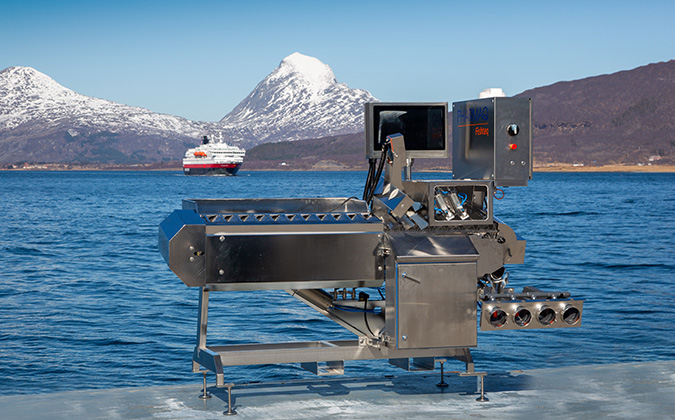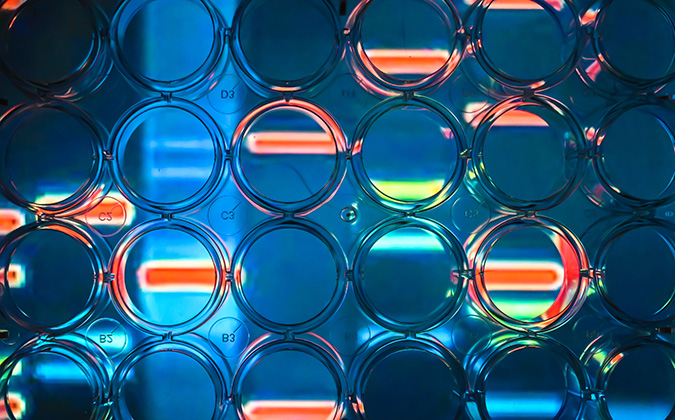
Pandemic accelerates aquaculture’s transition to automated vaccination
New measures introduced on fish farms to limit the spread of Covid-19 are fast-tracking the adoption of vaccine machinery as a growing number of producers recognize its advantages.
While the manual vaccination of farmed fish is still standard practice in many production regions, the aquaculture industry has seen the trend toward automated vaccination rise in recent years thanks to its well documented benefits, including greater speed and efficiency, improved precision and safety, and reduced handling, explains Dagfinn Strømme, managing director of PHARMAQ Fishteq AS.
With many fish-farming companies now imposing onsite personnel restrictions in response to the pandemic, he says there has been a further uptick in demand for vaccine machinery.
“In the current climate, hand vaccination is less favored. Many producers that were previously using our hand-vaccination solutions are now approaching us for machinery. We will get close to vaccinating 65 million fish by machine this year — an increase of 22% over last year.”
Simultaneous vaccination
PHARMAQ Fishteq’s vaccine-machinery portfolio includes three distinct units: NFT 20, 25 and 30. From a practical perspective, the main differences are that NFT 20 delivers a single injection of a single vaccine into the belly of the fish, while NFT 25 provides a single injection of two or three different vaccines (oil or water based) into the belly. NFT 30, meanwhile, gives a single injection of one or two different vaccines (oil or water based) into the belly. It can also be used to administer a single, intramuscular injection with one vaccine.
“One major advantage of this equipment is its capability to inject more than one vaccine in a single operation,” says Svein Alexandersen, director of technical services at PHARMAQ.
“Not only does that mean that you can significantly reduce the number of people required to administer the vaccines compared to hand vaccination, but the entire process is made safer through reduced handling. This in turn improves the welfare of the fish.”
From the producers’ perspective, he adds, an important benefit of the machine is the ability to inject the right number and combination of vaccines that are required for a particular batch of fish.
“The NFT machine can deliver one to three vaccines intraperitoneally and one intramuscular vaccine at the same time.”
By comparison, a hand vaccinator can only use one needle with one hand gun at a time, Alexandersen explains. Therefore, at least two tables are needed to do an intraperitoneal and intramuscular vaccination with hand vaccination. This also means that the fish spend longer out of the water.
Speed, sophistication driving adoption
Above all, the main reason for the shift toward machine vaccination is speed, Strømme confirms. Capable of vaccinating up to 8,500 fish per hour, the machines can also be connected in series to increase throughput.
“It’s about how fast you can get fish through the vaccination process,” he says. “While it differs from site to site, it’s probably possible for a team of six to 10 people to hand vaccinate a tank holding 100,000 fish in one day. With two of our machines, you can easily achieve that target — on average we vaccinate 150,000 fish per day with a team of six.”
Furthermore, he adds, the fish can be sorted into three different “lanes” following vaccination, with the sorting parameters controlled by touch screen. All data — such as vaccine use, number of fish and size — are automatically logged by the system.
Every fish is photographed, and its length is instantly calculated to determine the exact injection point required.
“When you consider that more than two fish are being injected per second, this equipment is moving quite swiftly,” Strømme says.
Species flexibility
While the machines were initially built with the vaccination of salmon, seabass and trout in mind, they can be easily adjusted to vaccinate a much wider range of fish species, Strømme says.
Already widely used in Norway’s salmon-farming sector, adoption of the NFT machinery is on the rise in the salmon sectors of the United Kingdom, Canada and Tasmania. There is also growing interest from other fish-farming sectors, Strømme notes, with Greek and Turkish seabass producers and Brazilian tilapia farmers among those seizing on the technology.
Additionally, four machines have been sent to Sweden, Finland, Italy and the US for trout production, with a further two machines to be sent to Denmark for trout in the coming months.
“Trout is really on the up and up. It’s a very different farming method to salmon. With rolling production cycles, the sector is vaccinating a lot of the time,” he says.






